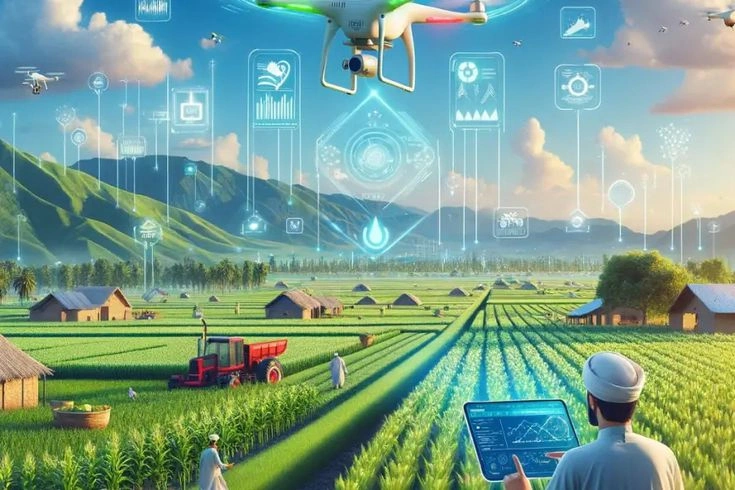
Introduction
Onion farming has traditionally been a labor-intensive process, but the advent of
digitalization and technology is transforming the industry. From precision agriculture to data
analytics, modern technology is enhancing productivity, reducing waste, and improving
quality.
1. Precision Agriculture
- GPS and Mapping: Modern onion farming utilizes GPS technology for precise field mapping, which helps in optimal planting and irrigation. This reduces wastage of resources and increases yield.
- Drones: Drones are used for aerial surveillance to monitor crop health, assess soil conditions, and manage irrigation. They provide real-time data that helps farmers make informed decisions.
2. IoT (Internet of Things) in Farming
- Smart Sensors: Sensors placed in the field can monitor soil moisture, temperature, and nutrient levels. This data is used to automate irrigation and fertilization, ensuring that onions receive the right amount of resources.
- Climate Control: IoT devices help manage climate control systems in greenhouses, maintaining optimal conditions for onion growth.
3. Data Analytics
- Predictive Analytics: Analyzing historical data helps predict weather patterns, pest outbreaks, and disease occurrences. This allows farmers to take preventative measures and optimize their farming practices.
- Yield Forecasting: Data analytics tools can predict yield outcomes based on current conditions and historical data, helping farmers plan better and reduce losses.
4. Automation and Robotics
- Harvesting Robots: Robotics technology is being developed to automate the harvesting process, reducing the need for manual labour and increasing efficiency.
- Welding Machines: Automated weeding machines can identify and remove weeds without damaging the onions, improving crop health and yield.
5. Supply Chain and Market Access
- Blockchain: Blockchain technology is used to track the supply chain of onions, ensuring transparency and reducing fraud. It helps farmers get fair prices by connecting them directly with buyers.
- E-commerce Platforms: Digital platforms allow farmers to sell their produce directly to consumers or businesses, expanding their market reach and improving profitability
6. Challenges and Future Trends
- Technology Adoption: While technology offers numerous benefits, the adoption rate can be slow due to high costs and lack of technical expertise among small-scale farmers.
- Future Innovations: Advancements in AI, machine learning, and biotechnology hold the promise of even more efficient and sustainable farming practices in the future.
Conclusion
Digitalization and technology are revolutionizing onion farming, making it more efficient,
sustainable, and profitable. As technology continues to evolve, it will be crucial for farmers to
stay informed and adaptable to harness the full potential of these innovations.
Call to Action
Stay tuned for more updates on technology in agriculture and share your thoughts or
experiences with digital farming tools in the comments below!
